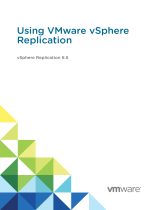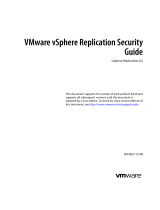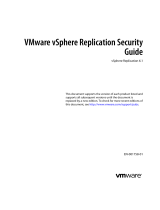
Creating Virtual Machines.................................................................................................................................................. 46
Deploy Virtual Machines to an Existing VMFS or NFS Datastore...........................................................................46
Deploy Virtual Machines to a New VMFS Datastore................................................................................................ 47
Create Virtual Machines to an NFS Datastore Using an Existing NFS Export......................................................48
Create Virtual Machines By Creating a New NFS Export........................................................................................49
Clone a Virtual Machine......................................................................................................................................................50
Recovering a Virtual Machine From a Snapshot..............................................................................................................51
Recovering Virtual Machine Data From a Snapshot..................................................................................................51
4 Managing Disaster Recovery....................................................................................................... 52
Activate Disaster Recovery................................................................................................................................................52
Restore/Start Disaster Recovery..................................................................................................................................... 53
Predefine Disaster Recovery............................................................................................................................................. 53
5 Viewing Dell Storage Information.................................................................................................55
Viewing the Dell Settings for a Host.................................................................................................................................55
Connectivity Legends................................................................................................................................................... 55
Configuring Storage Center Connections..................................................................................................................56
Adapter Details...............................................................................................................................................................56
Storage Details...............................................................................................................................................................57
Using Dell Views...................................................................................................................................................................57
General Tab.................................................................................................................................................................... 57
Usage Statistics Tab..................................................................................................................................................... 59
Connectivity Info Tab.....................................................................................................................................................61
Volume Snapshots Tab................................................................................................................................................. 63
Replications/Live Volume Tab..................................................................................................................................... 64
Viewing Dell Charts............................................................................................................................................................. 66
Charts..............................................................................................................................................................................67
6 Wizard Page Reference...............................................................................................................68
Add Storage (Storage Center)..........................................................................................................................................68
Add Storage (NFS)............................................................................................................................................................. 68
Compatibility Mode............................................................................................................................................................. 69
Create Multiple Datastores................................................................................................................................................ 69
Customization...................................................................................................................................................................... 70
Customization For Clone Virtual Machine........................................................................................................................70
Datastore Lookup................................................................................................................................................................. 71
Datastore Name....................................................................................................................................................................71
Datastore Options............................................................................................................................................................... 72
Datastore Properties........................................................................................................................................................... 72
Datastore Selection for Clone Virtual Machine................................................................................................................73
Device Configuration...........................................................................................................................................................73
Edit Activate Disaster Recovery Settings........................................................................................................................ 74
Edit Volume.......................................................................................................................................................................... 74
Extend RDM Size................................................................................................................................................................ 75
File System Version............................................................................................................................................................. 75
Host Selection......................................................................................................................................................................76
Host/Cluster.........................................................................................................................................................................77
Hosts and Clusters.............................................................................................................................................................. 77
4
Contents






















